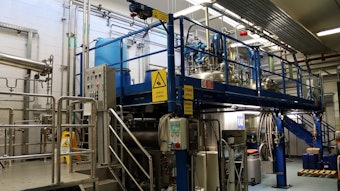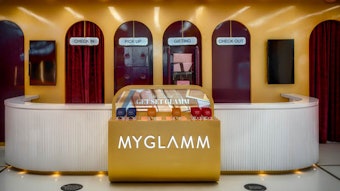Walk the aisles of any cosmetics and perfumes department, and you’ll see an interesting dynamic. Products are becoming cleaner, fresher and more streamlined, and consumers are responding. It’s no longer about extravagance; it’s about simplicity.
Manufacturers have tailored their scents, colors and textures to fit this new consumer preference, and that preference is a direct result of their lack of purchasing power. With less disposable income to spread around, consumers are looking for value, and pure scents and neutral shades will only win over consumers if that idea is evident in the price tag. This rejection of opulence also reflects an increased demand for sustainable products—natural, organic and eco-friendly goods that meet your health and beauty needs but do not cost more or create additional waste to do so. The number of sustainable products on shelf grew 79% between 2007 and 2008, and 66% of retailers are transitioning to “green” products as a result, according to the TerraChoice 2009 Greenwashing Report and the Retail Industry Leaders Association, respectively.
This desire for inexpensive but high value products has manufacturers clamoring for ways to reduce cost and simultaneously boost sales. Consumer and product analysts are pitching not just cleaner products but packaging that reflects that idea of sustainable simplicity. Shelves are lined with packages claiming the product within is 100% natural, certified organic and naturally pure, and while the look of a product can make or break a sale, it’s important to recognize that as consumers grow increasingly aware of the green movement, they become increasingly savvy at distinguishing the truly sustainable face cream from the pseudo-green acne wash. The beauty industry is susceptible to greenwashing accusations, but with an emphasis on being truly sustainable, a brand can both retain its customer base and generate new sales. And since it is the packaging of the product that attracts the consumer first, it should be here that the sustainable journey begins.
Time for Some Numbers
Logistics contributes $1.4 trillion to the U.S. economy, according to the 19th Annual State of Logistics Report. Costs associated with logistics account for 6.9% of a consumer packaging goods company’s sales, with 38% of that cost coming from outbound customer transportation, according to the Grocery Manufacturers Association. A packaging design should, in addition to being attractive and functional, be streamlined for compact and durable transport. As energy prices continue to rise, it’s an ideal time to revamp packaging design to make a positive downward impact on transportation costs. So, how can the cost of packaging be reduced? Change it up. Swap out materials, cut back on materials when possible and find a transportation provider that can handle goods in the most efficient way possible.
Out With the Old, In With the New
There is no doubt that in the beauty care industry, a product’s image drives or deflates sales, and packaging can make or break that image. But it is also critical to find packaging that can handle those long hauls from the warehouse to the shelf.
Begin by reviewing your product’s attributes: Is it temperature or humidity sensitive? Does it tend to absorb the scents of other products near it or leak its scent during extended warehousing periods? Is there a history of weight distribution issues during shipping? Is the product delicate and need several levels of packaging (both inner and outer packs)? The answers will help determine where you should go next—begin by finding the ideal durable and lightweight material to handle your product’s transportation voyage. Make sure to involve someone from the product’s entire life cycle in this process, from production and packaging to transportation and sales. Next, review outer packaging. Products could very well be shipping in ca
rdboard boxes—a damage prone and unstable method, but time-tested and comfortable. Consider the back-end costs the company incurs for waste disposal. Review sturdier options such as reusable totes, cartons and bins. They last longer, provide greater protection against damages and eliminate the problem of constant waste and, in turn, waste regulation compliance.
On to inner packs—the all-important packaging that serves the dual purpose of maintaining product integrity and enticing the consumer. Review the latest trend: cradle-to-cradle packaging. This concept, which originated with architect William McDonough and chemist Michael Braungart, literally eliminates the idea of packaging waste because it is either fully recyclable without any loss in material performance or it is biodegradable. Think about whether using 100% postconsumer recycled plastic is possible for your product. Ask your researchers if it’s possible to apply inks that, when washed out, leave pure reusable white paper or if your product could remain fresh in a fully biodegradable PET package.
Revamping Not a Fit? Try Reducing Instead
After consulting with your team, you might find that undergoing a complete overhaul of your product’s packaging is too expensive, or that such a dramatic alteration would risk losing your brand identity and customer base. Don’t worry. There is still plenty you can do to ensure a reduction in transportation costs. Rather than focusing on the type of material, focus on the amount. According to the GMA 2008 Global Logistics Survey, cost per hundred weight increased $1.63 between 2005 and 2008. This rise can be combated with a review of current case and pallet density. Is it possible to reduce the amount of inner or outer packaging you use in an effort to eliminate the shipment of air? The more you can pack onto a pallet and the lighter your goods are during shipping, the smaller your carbon footprint becomes.
If transportation accounts for between 30% and 50% of a product’s shelf price, then the fewer trucks shipping product, the better. Consider, for example, if it is really necessary to use an outer pack and a cardboard inner pack for an eye shadow palette that comes wrapped in a plastic shrink sleeve? How helpful is that extra two inches of plastic between the edge of the packaging and that blush brush? Consult the experts: review methods endorsed by the Sustainable Packaging Coalition, ask providers how they suggest increasing density. Improving pack-out can go a long way toward cutting logistics costs, and there are a myriad of options available to make certain your claims rate doesn’t increase as a result.
To illustrate how design can reduce materials, Alcan Packaging Beauty markets three types of lightweight tubes that are also eco-friendly. One of them, Access Denied, dispenses lotion/cleanser and has a tear-off band integrated into the cap. Its tamper-resistant design eliminates the need for a shrink sleeve.
Also keep in mind that retooling packaging to be more sustainable is both a new marketing tool and a surefire way to please retailers. Wal-Mart Stores’ Sustainable Packaging Scorecard has been around since 2006, and the world’s largest retailer has also announced its Sustainability Product Index, emphasizing material efficiency and reducing energy costs. If you pack more goods onto a pallet with less packaging and reduced waste disposal, there is a clear opportunity to enhance your relationship with retailers.
For example, Dallas-based Advanced Beauty Systems (ABS), a manufacturer of beauty products, continuously researches ways to improve packaging as a result of both the need to comply with packaging regulations in several countries and the requirement by some retailers to transition from both inner and outer packs to a pack-and-a-half approach—according to Kyle Caperton, the company’s senior operations analyst. In July 2009, the company replaced the traditional inner pack box structure with shrink wrap in its 12-, 24- and 36-packs of body cream and body spray. While the change was made to ensure boxes could break down according to retailer standards, the side benefits have materialized to include better optimized freight.
“That’s allowed us to go with a smaller shipper,” said Caperton. “We are able to pack more into a smaller box, and so we can get more on a pallet—and that helps with shipping and warehousing.”
Find an Expert Provider
After all the work you put in to making your packaging durable, lightweight and attractive to the consumer, the last thing you need is a logistics provider with little to no experience shipping products such as yours. Instead of relying on your shipping department to call around for the best quote, consider outsourcing to a logistics provider whose existing relationships with carriers produce lower shipping costs and whose experience with your type of product ensures fewer damages.
Find someone who understands the beauty industry. These products must remain fresh to retain quality and consumer confidence, so a provider with an efficient stock rotation program is essential. Also look for Web-based visibility programs that allow manufacturers to monitor inventory levels and “best buy” dates. What about value-added services such as kitting, cross-docking and repackaging for seasonal sales?
In regard to transportation costs and as evident with volatile fuel prices, products must travel the least miles possible to be cost-efficient. For smaller brands, utilizing consolidation programs is the most efficient way to level the playing field. These programs—offered by companies such as CaseStack, Hanson Logistics and Millard—combine various products headed to the same retailer on one purchase order, shortening delivery times and reducing costs and damages. Consolidation programs are sustainable by design; they reduce the frequency of less-than-truckload (LTL) orders and that reduces carbon emissions.
For suppliers, the conservation is most evident in transportation costs. These programs turn the rule “reducing logistics costs requires reducing service” upside down. And by throwing old paradigms out the window and working directly with retailers, there are methods to reduce costs by 20–40%—while also increasing on-time deliveries and taking millions of pounds of greenhouse gasses out of the equations. This can all add up to improved sales, as well.
ABS, which participates in a consolidation program to Wal-Mart, has been able to keep costs down because orders that once went LTL are now delivered on full trucks. The savings translates into more than one cent per unit, or 34 cents per case. The company’s shipping costs dropped by 42% as part of the program, and in 2008, ABS expanded with European demand. Their on-times have improved by 20% and their participation has resulted in the elimination of 1.2 million pounds of greenhouse gas emissions.
The reduction of gases, alone, is often worth the change in shipping. Consider, green beauty products are preferred by 50% of consumers, but 76% of those consider it unacceptable to pay more for sustainable goods, according to the 2009 Global Green Consumer Survey. It is more important than ever to back up sustainability claims with reduced waste, and hence, reduce cost. Sustainable inherently implies cost-neutral, and one of the easiest ways to both improve a product’s appeal to the eco-conscious consumer and reduce its price is by reformulating packaging.
Consult the experts, undergo a few changes and collaborate with an experienced logistics provider to ensure that your sales continue an upward trend.
Elizabeth Abrams is the marketing associate at CaseStack—where she handles the public relations, advertising, marketing and business intelligence strategies for the rapidly growing provider of sustainable logistics solutions. A substantial background in journalism and advertising brought her to CaseStack, where she has worked since 2008.










